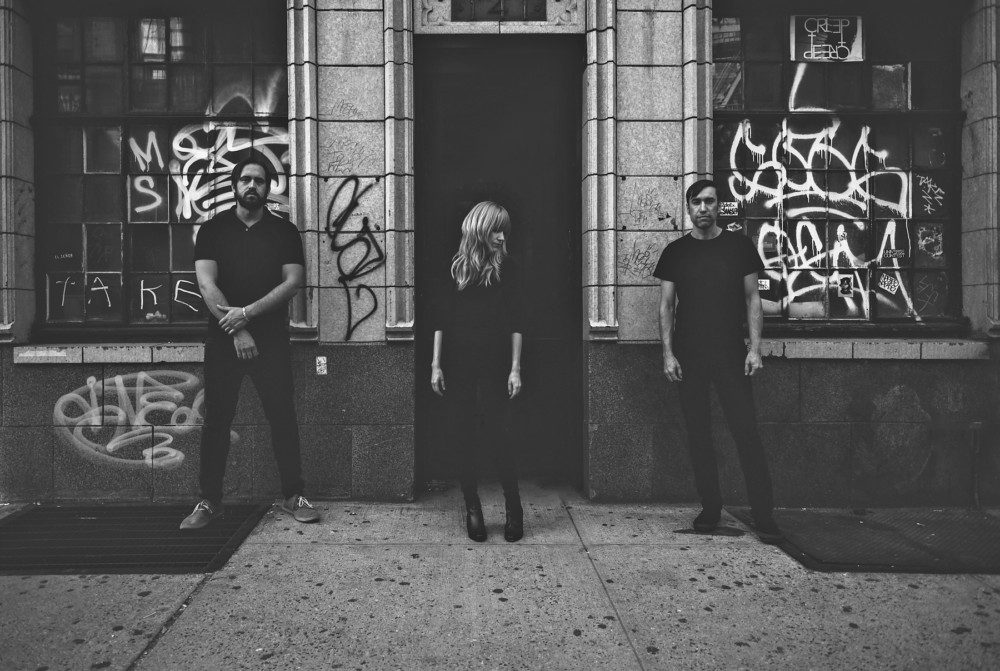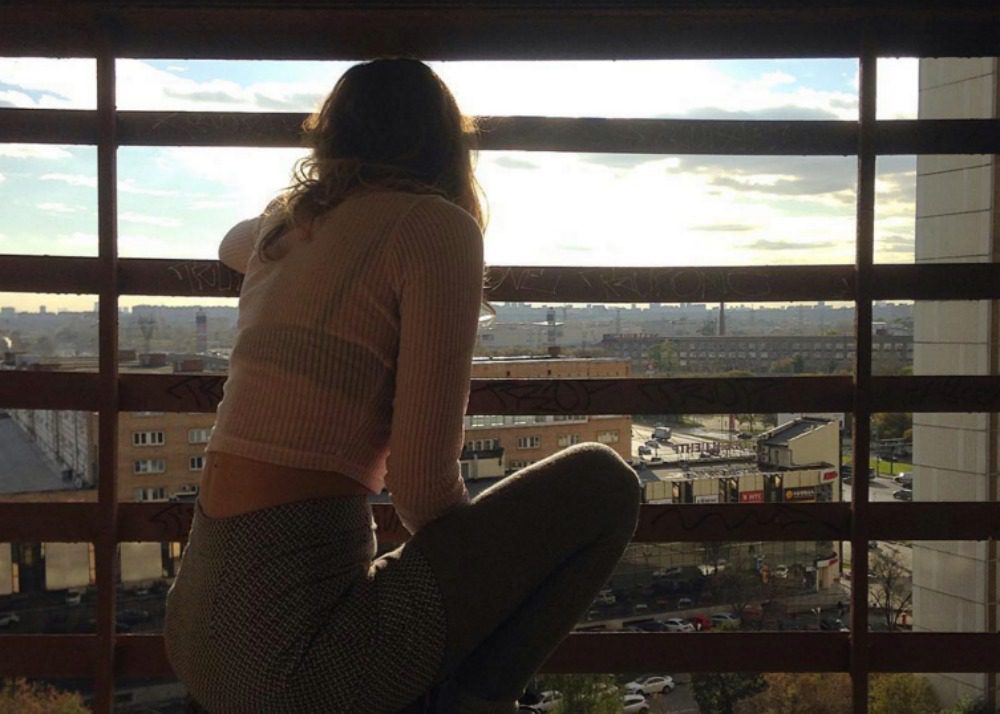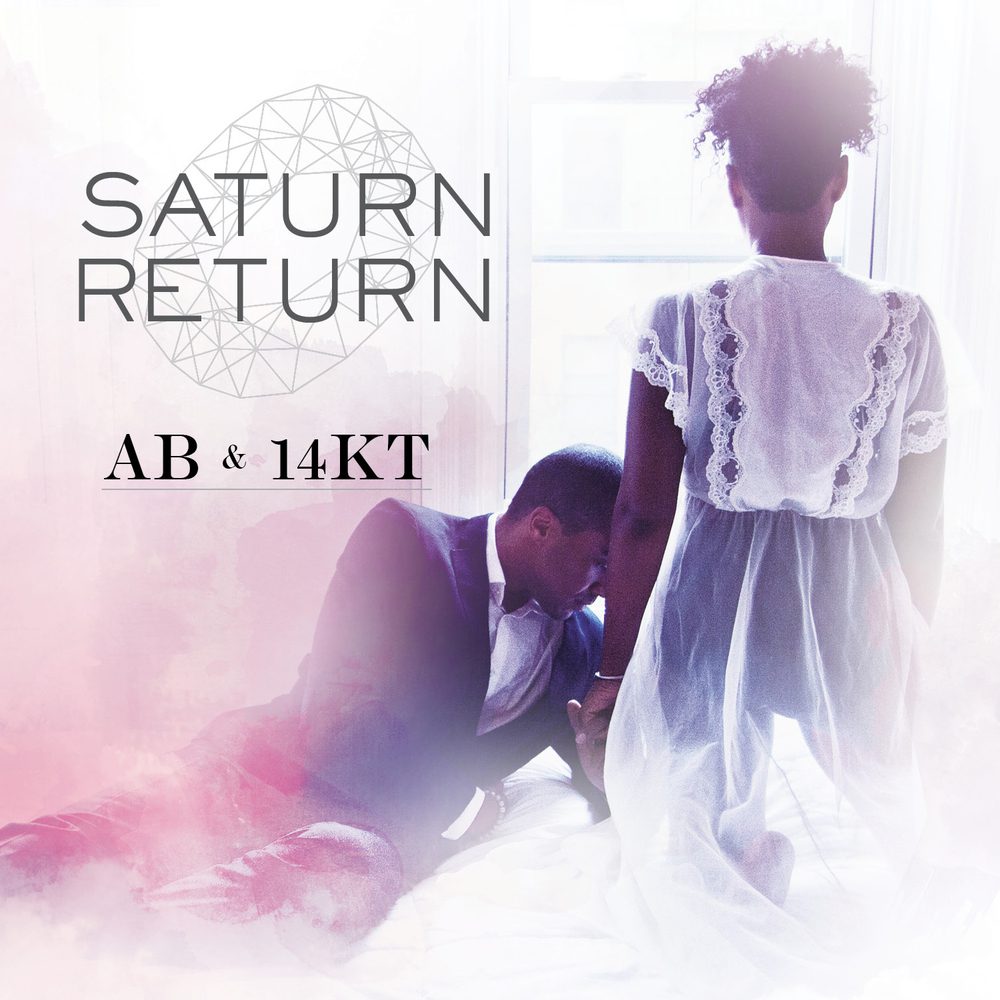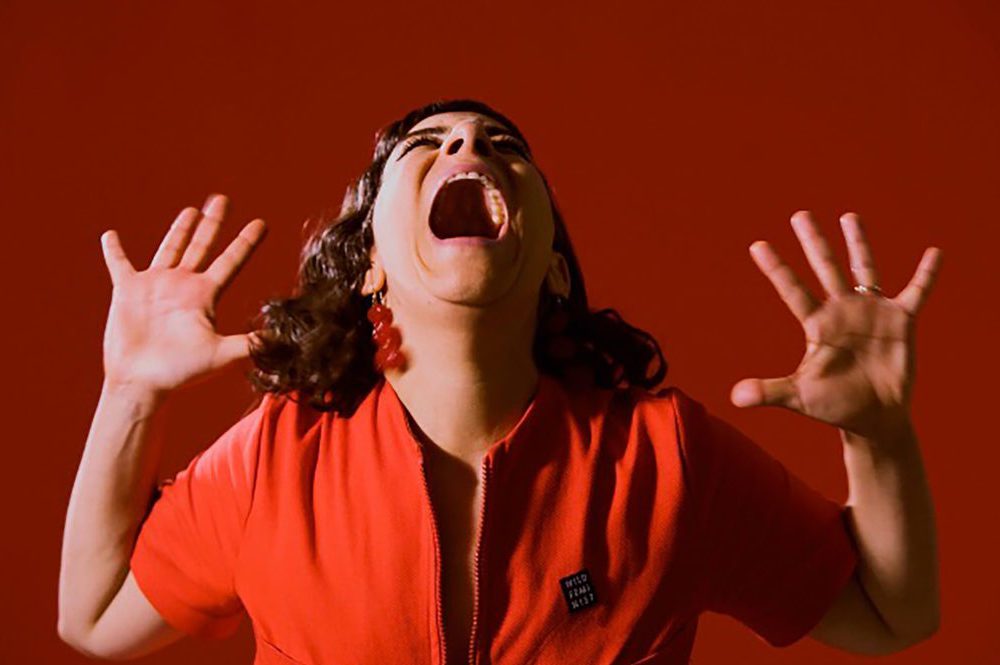

In the modern world, women are often pitted against one another for a few spots on the proverbial hamster wheel. Ume’s latest video for “The Center” explores the relationship women have to each other, how they can reject the current system and build a whole new order.
With the Austin band’s sound relying heavily on driving guitars, lead singer and guitarist Lauren Larson doesn’t hold back when it comes to playing music, even when it seemed life was about to derail her career. The band has become well known for its intense live shows, with bassist Eric Larson and drummer Aaron Perez anchoring Larson’s voice as it soars over her intricate guitar rhythms, the band working in well-oiled tandem. “The Center” is one of the band’s most taut songs, its tension an accurate representation of the band’s 2018 release Other Nature, a heart-thumping tight rope walk from one state of being to the next.
The video’s director Vanessa Pla describes the boxing match between two women as “a healthy competitive game, where a woman challenges her opponent – yet not in a malicious sense – but just by doing her best. Even if her opponent falls.. in the end she is there to lift her up and elevate her.” Pla says it’s a metaphor for a way forward: “Women have to start with each other when it comes to rising in this world, and although we are all set to carve out our own paths, we should inspire each other to keep fighting, because we are all fighting the same fight.”
Watch Audiofemme’s exclusive stream of “The Center” and read our interview with Lauren Larson below.
AF: Tell us about the first song you ever wrote. Were the mechanics of writing it very different from how you approach music today?
LL: I’ve always started with an intuitive riff, something spontaneous and not overthought. I still start most songs that way. Though in the very first Ume songs, I sometimes made up lyrics live on the spot during a performance (scary!) or impromptu in the studio. It was very visceral and raw. I spend a lot more time with the lyrics and overall song structure now. But the songs themselves still arise from the gut or heart, not some sense of theory.
AF: After reading quite a few descriptions, I had to find some live video of you performing. The energy you bring to the stage is almost overwhelming at times, the crowd fully invested, totally with you to the end. Do audiences normally get on the bandwagon pretty quickly? Have you ever had to win over a crowd? And if you did… how’d you do it?
LL: With Ume, we’ve always performed like every show is our last. I hold nothing back. I can’t perform any other way. But for many tours, the audience had no idea who we were. I would be heckled and harassed before I even played a note. I would even sometimes be denied entry onto the stage or denied access backstage, because it was for “band-members only.” I’ve been told to turn down before I even plugged in. So, yeah, we’ve had to win over audiences, especially when opening for bigger bands like Smashing Pumpkins, Jane’s Addiction, Blondie, Cage the Elephant. But I love to watch people’s reactions shift. I love to shatter their expectations. I remember opening a sold-out show with Circa Survive, getting a lot of stink eye during the beginning of the set, and by the end of the show when I smashed a guitar, the audience was freaking out as much as we were. Though whether it’s five people there or 5,000, we’ve always done the same thing – lay everything on the line with every performance. It’s not always about perfection, but passion, and I think most people appreciate that.
AF: You picked up a guitar at age 12. You’ve said that you had to make a lot of adjustments when it came to guitar playing because of your smaller hand size. What were some of the tricks you used to become comfortable playing?
LL: I’m a self-taught guitar player without any “real” training. I picked up my brother’s guitar to learn a few Nirvana songs. But even some basic chords were difficult at first, so I started experimenting with making up alternate tunings. I still use many made-up or alternate tunings. I’ve studied improving my technique over the years, especially after dealing with tendonitis. Stretching, practicing in the correct position, strengthening my posture have all helped me become a better player.
AF: You’ve worked with the nonprofit organization Girls Rock for many years now. What advice do you give young women who are learning to play an instrument, but struggle with stage fright?
LL: Have fun, let go, and remember there are no rules to how you should sound or how you should play! Find your own voice. I am awkward and shy off-stage, and I was extremely nervous about approaching a microphone when I first started. So I started screaming when I first decided to try out “singing.” I’ve used a “screaming” exercise with young girls terrified to use their voices. We start off softly, and get louder and louder, until they let go and let their voices break free of the fear. So many girls and women have never heard how strong their voice can be. Knowing you deserve to be heard can be life-changing.
AF: Tell us about “The Center” – how did the song come into being?
LL: This is from a collection of songs I wrote after the birth of my daughter. It was a time when I had to face and overcome my fears, fight through those voices saying I couldn’t do music anymore, accept change and find my strength. This is a song about inner and outer battles.
We build the song into a peak at the end with the lyrics, “No more weakness. No more weakness. War is weakness. No more weakness…” It’s a reminder that, as my friend said to me the other day, wisdom and strength take many different forms. Sometimes that means fighting through. Sometimes that means surrendering, especially surrendering to love. I’m facing a small “battle” now, as I just had to back out of a big concert at seven months pregnant. I had a bad fall that landed me in the hospital last week. I had to accept that sometimes the stronger thing to do is not “fight through,” but slow down, accept the moment and take care of ourselves.
AF: The video features two women fighting at a gym. Where did the idea for the video come from and how does it relate to your original intent for the song?
LL: Director Vanessa Pla had been working through this concept for a while and we decided to take “The Center” to the center of the ring. To me, the main character is not only freeing herself from stereotypical gender roles, but she’s also fighting through her own fears. It’s ultimately a video about empowerment and women supporting women. Even though the characters are fighting in the ring, they come together in the end as the one who has fallen is uplifted by the other fighter. There are many ways to find our strength – sometimes that means surrendering, sometimes it means supporting another, and sometimes it means standing back up and fighting through again.
AF: What music do you currently have spinning at home?
LL: I’ve been digging Julien Baker for a while, a new artist out of Austin named Jackie Venson, and the new solo project from KAZU of Blonde Redhead.
AF: How do you want people to feel when they leave an Ume show?
LL: Eric and I remember being young teens in the front row watching our favorites bands like Fugazi and Sonic Youth. I remember saying, “I want to make people feel this way. I want to make music too. Could I do that?” The best compliments I get are from people who say watching our performance inspired them to do something they were afraid to do.
UME’s latest album Other Nature is out now via Modern Outsider.




